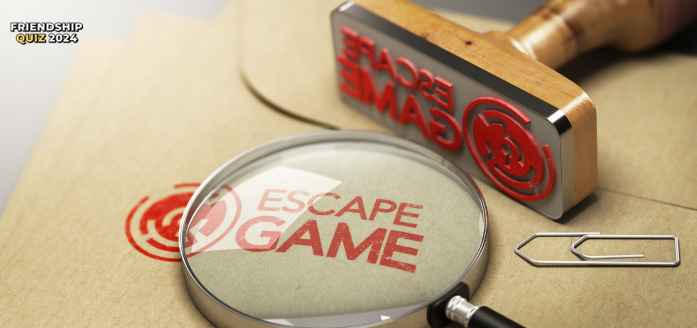Are you ready to take your next game night or party to the next level? Why not try your hand at designing your very own DIY escape room adventure! Creating an immersive escape room experience is an incredibly fun way to challenge your friends, coworkers or family while bringing everyone together for laughs and bonding.
An escape room is an interactive game where players are “trapped” in a themed room and have to solve a series of puzzles, riddles and clues in order to escape before the time runs out. While escape room facilities have popped up all over to host these exhilarating adventures, you can absolutely craft your own unique DIY version at home with just a bit of creativity.
Designing an awesome escape room challenge doesn’t require any dark magic or crazy complicated props. With some clever puzzle ideas and a sprinkling of imaginative storytelling, you have all the ingredients for an epic escape experience right at your fingertips. This guide will equip you with plenty of easy DIY escape room puzzles and tips for gameplay that’s sure to captivate your players from start to finish.
Why Make Your Own Escape Room?
So what’s the big deal about playing an escape room, you might ask? There are so many compelling reasons to design your very own twist on this style of gameplay:
It’s an Unforgettable Interactive Experience
Unlike just watching a movie or playing a typical board game, escape rooms put participants right in the middle of an unfolding story where their decisions and actions shape the experience. The sense of immersion and urgency as you race against the clock creates an adrenaline rush like few other games can match.
It Exercises Teamwork and Problem-Solving Skills
Sure, escape rooms are all about having fun. But they also happen to sharpen some incredibly useful skills in the process. Players must lean on communication, collaboration and out-of-the-box thinking to interpret clues and progress. These team-based challenges foster bonding in a really unique way.
You Can Get as Creative as You Want
The world is your oyster when crafting a DIY escape room. You have complete freedom to construct intricate narratives, design ingenious themed puzzles, customize clues to personal inside jokes – the possibilities are endless. It’s the ultimate creative blank canvas for imaginative masterminds.
It’s Affordable and Easy to Put Together
Professional escape room entertainment can get pretty pricey, not to mention being a bit inaccessible for larger groups. But creating your own room using basic household objects and crafting supplies means you can design an awesome experience for a fraction of the cost with just some time and creative thinking.
The Keys to Designing the Perfect DIY Escape Room
Before you start brainstorming all your wildly innovative puzzle concepts, there are a few overarching principles that will ensure your DIY escape room is an absolute blast for everyone involved:
Balance Puzzle Variety
The biggest mistake escape room designers often make is giving players an overwhelming string of super challenging logic puzzles that crush engagement and turn the experience into a chore. Successful escape rooms always balance three distinct gameplay elements:
- Puzzles – Lateral thinking brainteasers for those “aha!” moments
- Tasks – Self-explanatory activities like jigsaw puzzles that keep the game flowing
- Games – Lively physical challenges and palate cleansers like Nerf target practice
By architecting your puzzles, tasks and games in roughly equal proportion, you’ll create that perfect state of flow that is both thought-provoking and energizing.
Tell a Compelling Story
While escape rooms are fundamentally about solving puzzles, wrapping the entire experience in an engaging narrative takes things to the next level. A clear story objective like breaking out of prison, stopping an ancient curse or disarming a ticking time bomb gives purpose to the challenges. Theming the room to match your story through decor and multimedia transports players right into the action.
Customize to Your Audience
The joy of designing your own DIY escape room is you can tailor every aspect to your specific group dynamic and skill levels. Crafting riddles with injections of personal humor is a great way to make everyone feel included. Want to make things tougher? Go heavier on the puzzles. Prefer more of a laidback vibe? Load up on amusing party game challenges.
Simple Yet Wildly Engaging DIY Escape Room Puzzle Ideas
Now that you understand the fundamentals, let’s get into some inexpensive yet highly engaging puzzle concepts that are perfect for your DIY escape room! These are all designed to recreate that escape room magic using basic household items and crafting supplies.
Chain Two Things Together with a Lock
For an instantly understandable yet delightfully maddening puzzle, get your hands on an affordable chain and padlock. Use the chain to bind two objects like sliding doors or prop items in your room’s setting. Then the players have to figure out where the corresponding key is hidden!
Balloon Pop Madness
Want to add a dash of high-energy mayhem to your escape room? Inflate a set of balloons and leave them scattered around the play area, implying they are just part of the room’s decor theme. However, secretly slip a critical clue or puzzle piece into just one of the balloons. Once the players discover the riddle hinting at the hidden item’s target, the mad dash to pop every balloon will ensue!
Mirror, Mirror, on the Wall
Remember those classic spy movie moments where secret messages are decoded from steamy mirrors? This easy effect is a cinch to recreate as a puzzle in your escape room! Just inscribe your clue in reverse on a mirror using soap or other dissolvable substances. Then instruct players to breathe hot air onto the mirror to reveal the hidden message in all its cryptic glory.
Shattered Secrets Galore
For a delightfully involved puzzle sequence, try incorporating encrypted codes that must be meticulously pieced back together from fragments. This could consist of a message printed across multiple popsicle sticks that are scattered around the room or a cipher key formed from shards of a shattered terracotta pot. Players will feel like true archaeologists decoding the ancients!
A Mind-Bending Maze
While simply printing out a maze for players to solve sounds straightforward, you can ratchet up the intrigue by integrating extra layers. For example, place red herring codes or letters in certain maze paths. Only the correct route will form a legitimate anagram or message for the next clue. It’s a simple setup with a satisfying payoff.
Locked-Up Tools of the Trade
Folks, does it get any more classic than a pair of sturdy scissors or wire cutters secured shut by a combination padlock? This puzzle sets up the urgency immediately. Maybe players need those items to cut through a chain or disarm a prop in the room. You can have fun crafting lore around why the tools are locked up. A label like “Plasma Cutters: Good for any Size Chain” already hints at the silliness to come.
And those are just a few highlights from the bottomless treasure trove of DIY escape room puzzle ideas! With puzzles, tasks and games like these that are easy to put together and facilitated using common household items, the only limits are your imagination.
Tips for Running Your DIY Escape Room Smoothly
Speaking of imagination, let’s make sure your escape room doesn’t descend into total chaos and confusion. Follow some of these gameplay facilitation best practices to keep your players captivated and on track:
Create Clear Mission Briefings
Don’t just throw players into the room with no context and expect magic. Establish a clear overarching objective upfront with a compelling story hook to latch onto. Are they breaking out of an ancient temple? Disarming a laboratory virus before time runs out? Having a proper mission briefing immerses players right away.
Reveal Clues through Environmental Storytelling
Use immersive multimedia effects and staged props around the room to guide players organically through the challenges and reveal clues. Adding mysterious background audio, projected imagery, secret passageways and the like make the experience feel authentic while simultaneously foreshadowing upcoming puzzles.
Plant “Accidental” Clues to Redirect
No matter how thoroughly you playtest designs, stuck moments are inevitable for any escape room. Just be ready with some planned “accidental” clue placements you can quickly slip into the room to redirect players who have gone down an overthinking rabbit hole. Video solutions can work too.
Keep It Playful and Lighthearted
At the end of the day, your main mission is for everyone to have an awesome time, not torture them with diabolical Saw-level difficulty progression. Make sure to include plenty of humorous embellishments in your game like cheeky notes from a fictional Riddler-esque character or slapstick physical challenges to balance the heavier brainteasers. If players ever look stressed out



